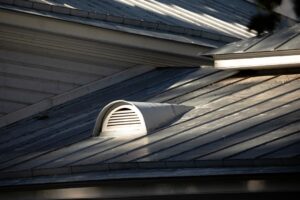Mastering TPO Roofing Maintenance
Commercial TPO roofing systems deliver energy-efficient, durable protection for flat and low-slope roofs, but they can develop issues like seam failures, membrane punctures, UV degradation, ponding water, and installation errors. This maintenance guide explains how property owners can identify and address these common problems while extending roof lifespan and reducing repair costs. We will examine the causes and detection of TPO roofing failures, prevention checklists, repair methods, installation best practices, financial considerations, drainage solutions, and seasonal maintenance strategies. Along the way, you’ll discover how expert commercial TPO roofing services can support every stage of your roof’s lifecycle.
What Are the Most Common Problems in Commercial TPO Roofing Systems?
Commercial Thermoplastic Polyolefin (TPO) membranes are prized for their reflectivity and flexibility but remain vulnerable to a handful of pervasive issues that undermine performance. Recognizing these problems early—seam failures, punctures, UV degradation, ponding water, and improper installation—lets property managers implement targeted maintenance and avoid expensive repairs.
TPO Roofing Problems and Solutions
TPO roofing can experience issues such as punctures, seam failures, and UV damage. Proper installation, regular maintenance, and addressing problems promptly are crucial for extending the roof’s lifespan.
How Do Seam Failures Occur and How Can They Be Detected?
Seam failures happen when heat-welded overlaps separate due to improper welding technique or thermal movement, leading to water infiltration and blistering. During routine inspections, look for:
- Visible gaps or wrinkles along welded seams
- Blister formation beneath the membrane surface
- Moisture staining near roof drains and flashings
| Cause | Detection Method | Recommended Response |
|---|---|---|
| Inadequate heat welding pressure | Visual gap inspection along laps | Re-weld seams using calibrated tools |
| Thermal expansion and contraction | Tactile seam probe to test adhesion strength | Install expansion joint flashing |
| Debris lodged in weld path | Clean surface and reinspect weld integrity | Remove contaminants, then re-weld |
Proper seam maintenance prevents small separations from becoming major leaks, leading us to the next common issue: membrane punctures.
What Causes Membrane Punctures and Tears on TPO Roofs?
Membrane punctures and tears result from concentrated foot traffic, airborne debris, or dropped tools, compromising waterproof integrity. For example, rooftop equipment installations often leave sharp edges that can snag the membrane. Common sources include:
- Construction and maintenance crew traffic
- HVAC unit vibration against the membrane
- Branches or gravel abrasive contact
Managing these risks through designated walkways and protective pads reduces the likelihood of costly penetrations and sets the stage for understanding UV degradation effects.
How Does UV Degradation Affect TPO Roofing Membranes?
UV degradation occurs when prolonged sun exposure breaks down polymer chains in the TPO membrane, causing chalking, discoloration, and surface cracking. On sunny days, reflectivity may drop by 15–20% within five years, leading to:
- Yellowing or chalky white spots on the surface
- Hairline cracks radiating from stress points
- Loss of tensile strength and elongation capacity
Applying UV-resistant coatings and scheduling mid-cycle inspections helps arrest weathering before it evolves into membrane breakdown.
UV Radiation and TPO Roofing
TPO roofing membranes are designed to be UV-resistant, but prolonged exposure can still lead to degradation. UV stabilizers are added to protect the material from damage.
Why Is Ponding Water a Risk for Commercial TPO Roofs?
Ponding water forms where roof slope is insufficient or drains become blocked, trapping moisture against the membrane and accelerating degradation. Standing water exceeding 48 hours increases membrane stress, resulting in:
- Accelerated wear at membrane low points
- Increased potential for algae and mold colonization
- Added weight on the roofing system
Addressing drainage design and clearing debris from scuppers protects the TPO surface and leads us to examine installation errors that compound these issues.
Ponding Water and Membrane Roofs
Ponding water can lead to membrane deterioration and leaks in TPO and other flat roofs. Proper drainage design and clearing debris are crucial to prevent these issues.
How Does Improper Installation Lead to TPO Roof Problems?
Improper installation—such as misaligned seams, inadequate substrate preparation, or skipped insulation layers—compromises TPO performance from the start. When installers cut corners to save time or costs, property owners face:
- Early seam failures due to inconsistent weld quality
- Membrane indentation from uneven insulation surfaces
- Blister formation from trapped moisture and air
Ensuring certified installers and strict quality control during installation prevents these foundational problems and paves the way for proactive maintenance.
TPO Roofing Problems and Solutions
Improper installation, including incorrect seam welding, can lead to leaks and seam failures in TPO roofs. Proper installation practices are crucial for preventing these issues.
How Can Property Owners Prevent and Maintain Commercial TPO Roofing Systems?
Effective TPO roof maintenance involves a combination of regular inspections, safe cleaning practices, and proactive damage management to optimize membrane integrity and roof longevity.
What Are the Essential Steps in a TPO Roof Maintenance Checklist?
A structured maintenance checklist ensures systematic coverage of all critical roof components. Key steps include:
- Inspect all seams and flashings for separation or blisters.
- Check membrane surface for punctures, tears, and chalking.
- Clear debris and sediment from drains, scuppers, and gutters.
- Examine roof penetrations—vents, pipes, and HVAC curbs—for secure seals.
- Test drain flow rates to confirm proper drainage.
- Apply manufacturer-approved protective coatings as needed.
- Document findings and schedule follow-up repairs.
Following this checklist reduces the risk of undetected damage and guides property managers toward optimal inspection intervals.
TPO Roof Maintenance Guide
Regular cleaning, inspections, and addressing issues like ponding water are essential for maintaining TPO roofs. Seasonal inspections and appropriate cleaning practices are recommended to extend the roof’s lifespan.
How Often Should Property Managers Inspect Their TPO Roofs?
Routine inspections every six months, ideally in spring and fall, enable early detection of emerging issues before seasonal extremes intensify damage. For high-traffic or shaded roofs, quarterly inspections offer added protection against debris accumulation and microbial growth.
What Cleaning Practices Protect TPO Membranes from Damage?
Gentle cleaning preserves TPO membrane flexibility while removing harmful contaminants. Recommended practices include:
- Using low-pressure water washes (≤150 psi) to eliminate dirt and algae.
- Applying pH-neutral, TPO-compatible detergents without solvents.
- Rinsing thoroughly to avoid chemical residue.
- Avoiding abrasive scrub pads or harsh chemicals that can etch the membrane.
Safe cleaning extends membrane life and builds toward managing foot traffic and debris.
How Can Foot Traffic and Debris Be Managed to Avoid Roof Damage?
Controlling rooftop access and airflow reduces accidental membrane damage. To protect the roof:
- Install walkway pads or pavers along high-traffic routes.
- Use barricades or signage to restrict unauthorized areas.
- Trim overhanging branches and secure loose gravel.
- Inspect equipment mounts for secure, vibration-dampening isolation.
These measures prevent new damage and support targeted repair strategies.
The rest of the article continues with repair methods, professional repair guidelines, installation best practices, financial considerations, drainage solutions, and seasonal maintenance strategies…
Effective TPO roof maintenance not only prevents damage and reduces lifecycle costs but also enhances energy efficiency and property value. By identifying common issues early, applying targeted repairs, and partnering with qualified experts, property owners can secure long-term performance from their commercial TPO roofing systems. For professional installation, maintenance, or repair support, trust the expertise and comprehensive solutions of Gomez Roofing.




